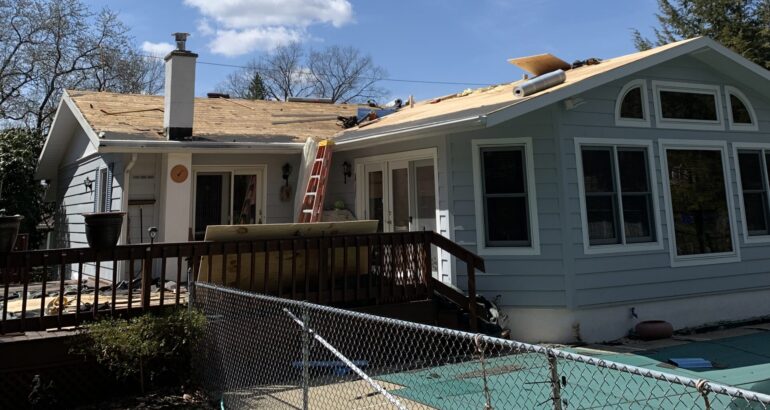
- by John Bittner
As a homeowner, making sure your roof is properly ventilated is essential to protect your most valuable asset. But how can you tell if your home needs improved roof ventilation? Here are important factors to consider when evaluating your roof’s airflow needs.
Warning Signs Your Roof Needs Help Breathe
Some clear indicators your home would benefit from upgraded ventilation:
Walking into a sweltering hot attic on a sunny day. Inadequate ventilation prevents all that hot air from escaping.
Noticing mold, moisture, or rotting rafters in the attic. Proper airflow keeps humidity in check.
Finding curling, buckling, or prematurely worn shingles on your roof. Overheating shortens their lifespan.
Dealing with ice dams in winter. Poor ventilation leads to snow melt issues.
If you’ve noticed any of these problems, your roof likely needs help breathing easier with improved ventilation.
Importance of Proper Roof Ventilation
Effective shingle roof ventilation offers many benefits beyond fixing the above problems. Key advantages include:
Energy efficiency. Properly ventilating your attic helps keep your home cooler in summer and warmer in winter, reducing HVAC costs.
Roof longevity. Controlling attic temperature and moisture extends the life of shingles and sheathing. This saves on expensive roof repairs and replacements.
Preventing mold. Venting attic moisture inhibits mold growth which can lead to respiratory issues and wood rot.
House durability. Ventilation helps control humidity levels in wood framing and drywall to prevent cracking or warping.
For optimal roof performance and energy efficiency, most experts recommend all attics have ventilated space equal to 1/150 of the total attic square footage.
Types of Shingle Roof Ventilation Systems
If your home needs updated ventilation, some options to consider include:
Ridge vents – These roof-top vents run along the peak allowing hot air to escape. They work well with soffit intake vents.
Gable vents – Simple vents installed in the triangular gable-end walls. They should be evenly balanced with soffit vents.
Turbines – Spinning roof caps that act like exhaust fans to draw hot air out. Effective but may need repair over time.
Powered fans – Thermostatically-controlled fans mounted to gables or roof deck to ventilate on demand. Requires electrical wiring.
A qualified roofer can assess your attic and recommend the right ventilation approach based on your roof structure, shingle type, climate, and other factors. They can properly install and balance your ventilation system.
Why Proper Ventilation Matters
Effective roof ventilation provides huge benefits beyond solving the above issues. Here are key reasons to ventilate:
Saves money on energy bills by keeping your home cooler in summer and warmer in winter.
Extends the life of your shingles and sheathing by regulating attic temperature and moisture.
Prevents mold growth by venting out humid attic air. This also limits wood rot.
Maintains the structural integrity of framing and drywall by controlling indoor humidity.
The general recommendation is your attic should have ventilated space equal to 1/150th of its total square footage.
Smart Options for Improved Airflow
If your attic needs more airflow, some good options include:
Ridge vents along the roof peak to let hot air escape. Use with soffit vents for intake.
Gable end vents balanced with soffit vents for proper cross-ventilation.
Turbines that act like exhaust fans to draw hot air out.
Powered, thermostat-controlled fans to ventilate on demand.
Consult a qualified roofer to recommend the best system for your roof type, climate, and home. They can properly install and balance ventilation.
Hiring a Professional Roofing Contractor
Evaluating and upgrading your roof ventilation are jobs best left to experienced roofing contractors. Here are tips for hiring the right pro:
Ask friends for referrals to roofers who have impressed them.
Verify the roofer has all appropriate licenses and insurance coverage.
Look for contractors who employ certified technicians and focus specifically on roofing.
Request quotes from at least 3 reputable local roofing companies.
Choose a roofer who thoroughly inspects your attic and explains their recommendations.
Breathe Easier with Bittner Roofs
Rather than gamble with DIY ventilation, have an expert roofer assess your needs. The knowledgeable professionals at Bittner Roofs have the experience to diagnose any attic issues and suggest customized solutions to keep your home comfortably ventilated. Contact them today to schedule an inspection. You can count on their roofing contractors to outline smart ways to help your shingle roof breathe easier.


